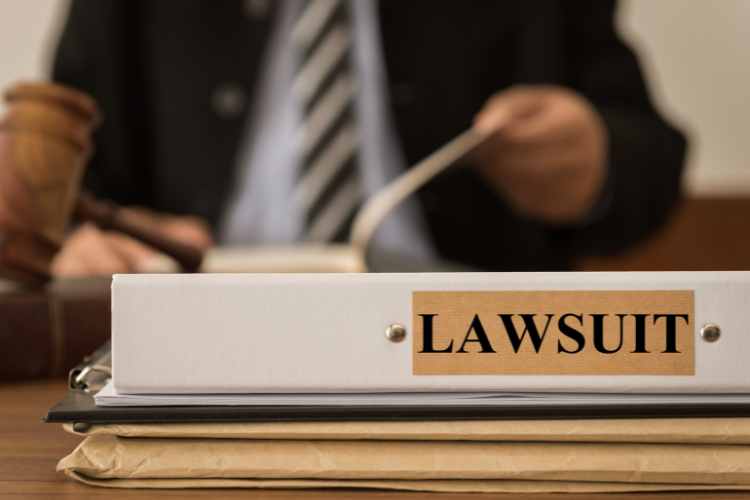Camp Lejeune is a water contamination lawsuit that was first made to give justice to people exposed to contaminated water at Marines Corps Camp Lejeune between August 1953 and December 1987. The source of contamination was established to be industrial spills, an off-base dry cleaner, and off-base underground storage tanks.
Eligibility for the Lawsuit
Certain conditions have been placed for individuals to be eligible for the lawsuit. First, they have to prove that they were exposed to Camp Lejeune’s contaminated water for at least 30 days. Additionally, they must prove that they have suffered from chronic illnesses like cancer, Parkinson’s disease, or leukemia due to Camp Lejeune’s contaminated water.
Camp Lejeune Toxic Water Lawsuit Process
Hiring a Lawyer
A lawyer prepares clients for the lawsuit process. This usually involves explaining the length and different stages of the lawsuit. The lawyer also directs the client on what to expect as a plaintiff and the legal terminologies to expect during the case so that they can familiarize themselves before the lawsuit is officially filed. In addition, the lawyer helps the client determine whether there is proof of negligence from the party being sued.
Hiring a lawyer increases the client’s chance of winning the case for the following reasons:
• The lawyer is knowledgeable about the legal field.
• A lawyer has great negotiation tactics.
• Lawyers have connections and necessary resources to help clients win a case.
Requirements
The plaintiff needs to have the following pieces of evidence to stand a chance of winning a Camp Lejeune toxic water lawsuit:
• Medical records and bills that prove they are suffering from a chronic illness
• Photographs (if applicable)
• Witness statements
• Records of losses incurred since the contraction of the disease
Negotiations
A pre-lawsuit negotiation usually involves the plaintiff’s lawyer trying to resolve the case with the opposite counsel before deciding on trial. This can be done through an informal settlement. The plaintiff’s lawyer offers an amount based on the strength of the plaintiff’s case and the extent of the damage. If the defendant accepts, they can have a quick settlement, which most victims prefer. However, if the defendant does not agree with the settlement amount proposed by the plaintiff, the plaintiff can reject the offer and push for a court settlement.
Complaint
A complaint is the principal communication document used in a lawsuit. It is used to file a lawsuit against the defendant. This legal document informs the defendant of the following:
• The reasons for the lawsuit
• The claims filed against them
• The particulars of the damages suffered by the plaintiff
Defendant’s Response
After the defendant is presented with the claims by the plaintiff, the two parties begin the discovery process. The two parties are gathered in a legal setting and inform each other of the proof, witnesses, and evidence they have. This helps them gain information about the case. Other important information shared during this period includes:
• Interrogatories
• A defense medical examination (if available)
This stage can last for months since the plaintiff has to be well prepared. For instance, if the defendant’s counsel requests more information from the plaintiff’s counsel, the minimum duration for a response is about 30 days.
Setting the Trial Date
This stage is sometimes called the case management conference (CMC) and is mostly held 120 to 180 days after the lawsuit’s filing. Both lawyers and the judge involved in the case meet to discuss issues related to the case. However, the plaintiff and the defendant don’t need to attend this conference. The main aim of the meeting is mostly to set a date for the trial.
Pre-Trial Settlement
Before the trial, the court and the parties involved in the lawsuit try alternative dispute resolution procedures. This is usually a second attempt to resolve the conflict without going to court. It takes place about 30 days before the trial date.
This process involves the superior court judge, the two lawyers, and the parties involved. The most common alternative dispute resolution (ADR) procedures include arbitration and mediation. However, the neutral evaluation process can also be used.
Trial
The trial process mostly involves the following activities:
1. The plaintiff and defendant present evidence to the court.
2. The judge then decides if there is enough proof to prove their case.
3. If the case is proven, the judge declares a judgment against the defendant.
4. The defendant has 30 days to challenge this judgment in a superior court of law within the state where the plaintiff was located when they filed the case
5. If the defendant does not challenge the judgment, it becomes a decree.
6. If the plaintiff succeeds in his case, they are awarded monetary compensation due to their illness or injury.
One of the reasons why affected people at Camp Lejeune are advised to file for a lawsuit is the toxins proved to be in the water. These toxins include tetrachloroethylene, trichloroethylene, and vinyl chloride. The concentration of the toxic chemicals at Camp Lejeune was 2,000 times higher than the Environmental Protection Agency’s safety limits.
